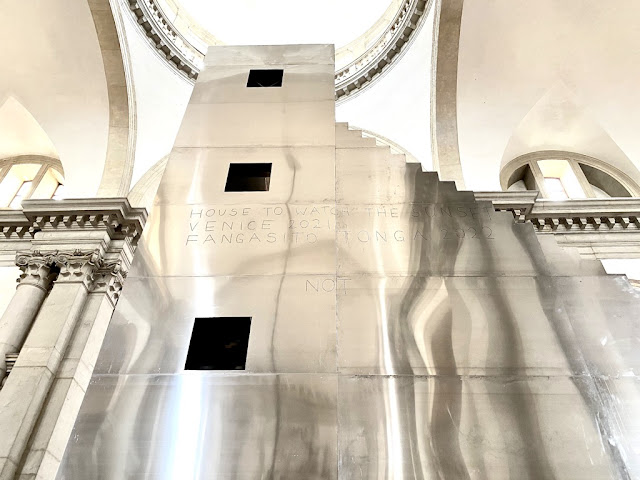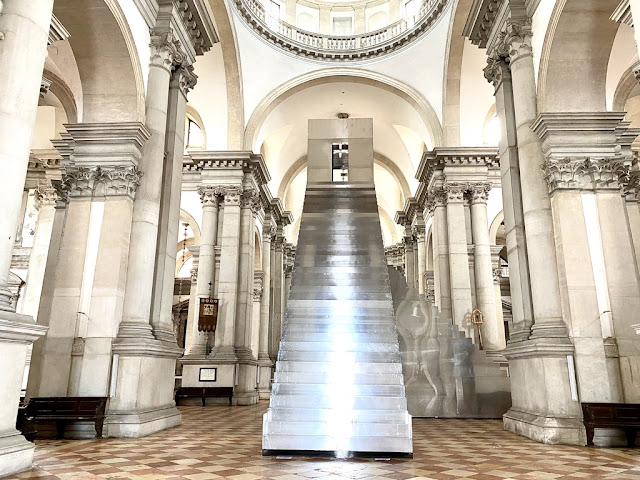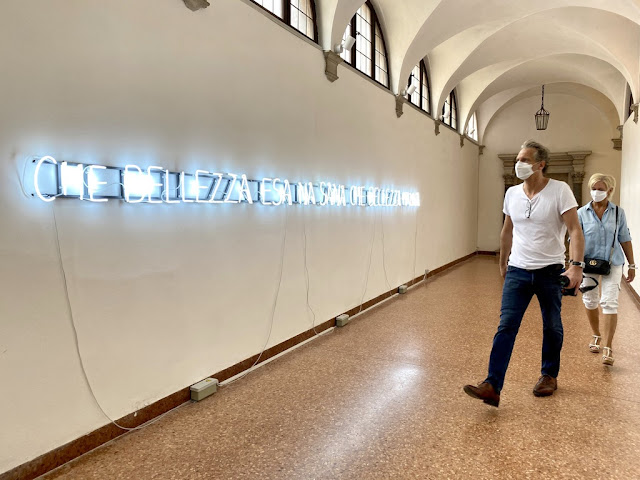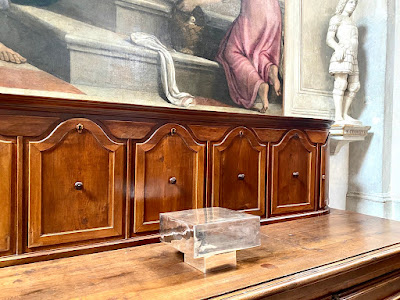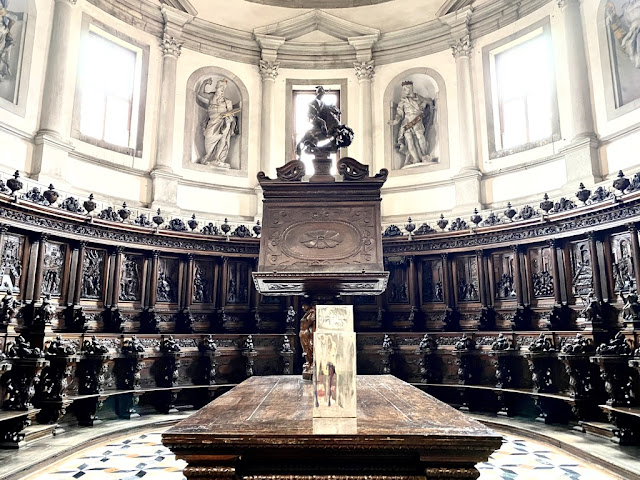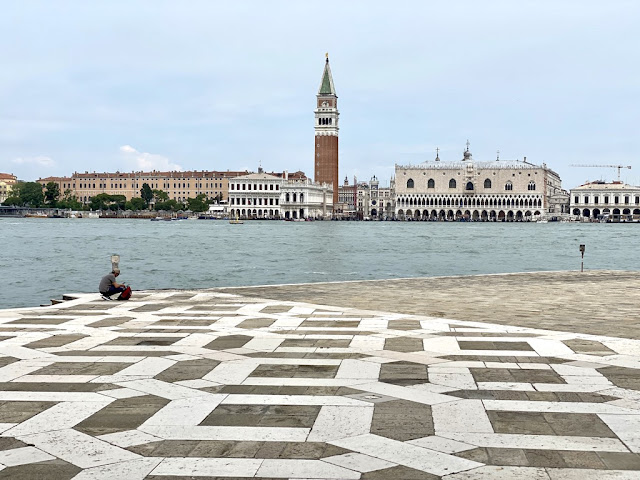Biennale Architettura - Collateral Event
Isola di San Giorgio Maggiore - Abbazia di San Giorgio Maggiore
Not Vital. SCARCH
Inside the Abbazia di San Giorgio Maggiore, until November 21, the Not Vital. SCARCH exhibition is curated by Giorgia von Albertini. Not Vital is a Swiss artist who has travelled and exhibited widely since the 1970s. Central to his practice is the exploration of the spatial and socio-cultural backdrop of his multiple homes and workplaces. The centrepiece of Vital's exhibition is an iteration of his global House to Watch the Sunset project that he initiated in 2005 with the aim of building a structure for the sole purpose of contemplating the sunset on each continent.
House to Watch the Sunset - 2021 aluminium - 13m - H - detail
https://www.labiennale.org/en/architecture/2021/collateral-events/
To give a name to such artworks that bridge sculpture and architecture, for the exhibition title Vital coined the term 'SCARCH'. The buildings Vitals subsumes under his neologism are formalistic and exist primarily to fill one single - usually poetic and transcendental - purpose, such as contemplating the sunset or hiding from wind and sandstorms.
House to Watch the Sunset - 2021 aluminium - 13m - H - front
House to Watch the Sunset - 2021 aluminium - 13m - H - back
Displayed in the corridor of the sacristy is a long neon installation that relates to migration and language: Che Bellezza Esa Na Sanna Che Bellezza Hanna - What Beauty, They Don't Know What Beauty They Have. It is what migrant workers from the Engadin often said on returning home from Italy, where they made their living. The saying is half Romansh and half Italian, underscoring the impact of migration on language.
Che Bellezza Esa Na Sanna Che Bellezza Hanna 2018 - neon
Vital's The Last Supper in the sacristy, is a round, monumental painting which measures eight meters in diameter. As always in his paintings The Last Supper stands between figuration and abstraction, with the portrayed figures - Jesus with his apostles - rendered in dark colors and the remainder of the pictorial ground almost empty. While the painting's motif is in harmony with the sacral setting in which it is exhibited, its colors, or lack thereof, relate to Vital's homeland. The Engadin valley in the eastern Swiss Alps is a region of color asceticism. It is known as the Grisons or "land of gray".
The Last Supper - 2019 - oil - cotton cloth - canvas
The
ongoing silver portraits, with which Vital portrays historical figures,
as well as people who are close to him, often recall the shape of a
standing person. Yet these works are the result of a strict
mathematical model that converts a date of birth into abstract form. They are always made by silversmiths in Agadez, Niger, the portraits have a subtly animated surface that conveys traces of their making.
Andrea Palladio - 2020 - 2 silver box
Tintoretto - 2020 - 2 silver boxes
Pope Francesco - 2020 - 2 silver boxes
The recent sculpture Viver & Murir consist of deer antlers, a traditional hunting trophy in Vital's native Engadin. The artist had them cast in bronze and embellished with the lettering of the title, which reads - life and death - thus indicating the beginning and the end of every life circle.
Viver & Murir - 2021 - bronze
Venice from the island of San Giorgio Maggiore
Please note - words by curator Giorgia von Albertini
